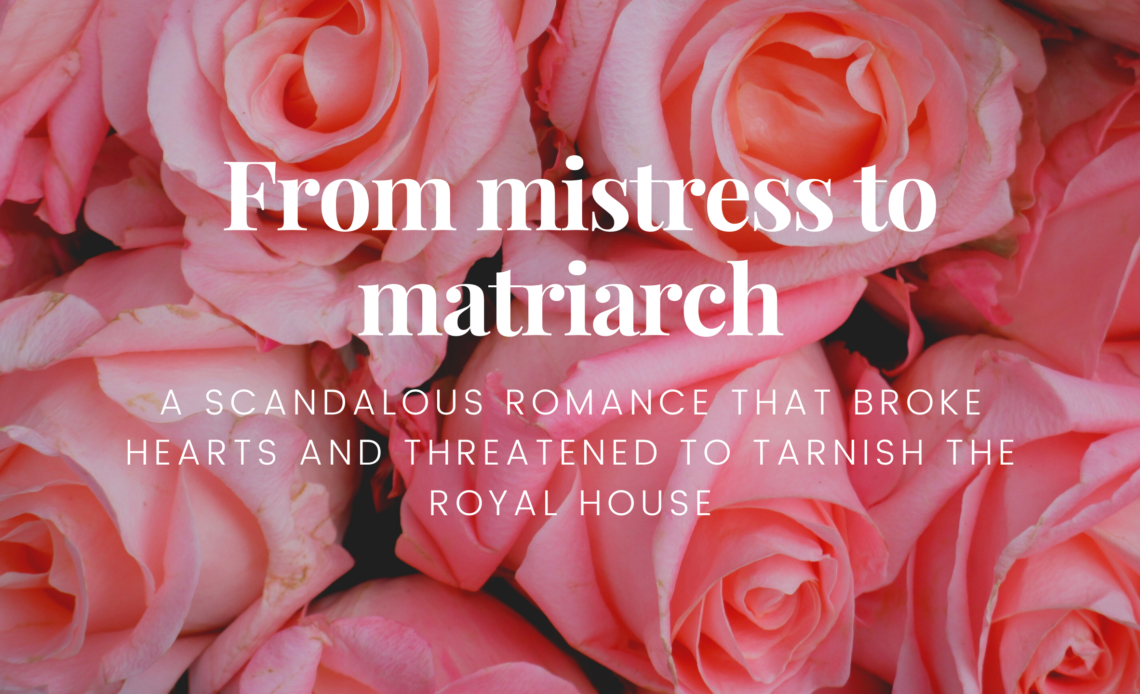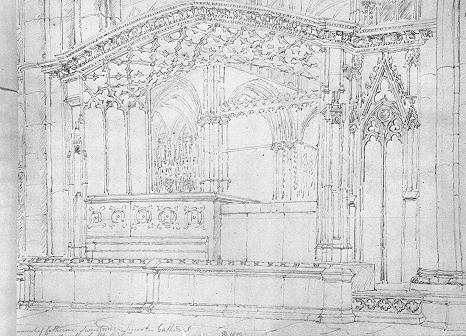
It was a famous royal love story that shocked as much as it thrilled. John of Gaunt was the ultra-ambitious prince whose desire to be a king almost cost him his life, Katherine Swynford was the mysterious commoner who supplanted a queen in his affections. Their relationship lasted decades, survived a serious separation and ultimately led to the creation of a dynasty which would snatch the throne of England and weave its way into ruling houses across Europe. Yet theirs was a scandalous romance that also broke hearts and threatened to tarnish the reputation of his royal house permanently. This is one regal romance that still surprises, almost seven hundreds years on.
What makes this game of thrones and hearts even more exciting is that many parts of it are still shrouded in mystery. John of Gaunt was the third surviving son of King Edward III and Philippa of Hainault, born in 1340, but even in his early years, rumours sprung up that he was, in fact, a changeling, a baby brought in to replace the royal couple’s actual child who had died very young. Katherine’s origins provided just as much fodder for gossip. She was born in 1350 in Hainault, the daughter of a herald called Paon de Roet who enjoyed a long career in royal service. However, her mother’s name is lost to history and appears to have been from a very early time. And even more strangely given her relatively lowly ancestry, as a young girl she was taken into the household of Queen Philippa herself, spending several years in the company of the royal couple’s youngest daughters.
Given the age gap between John and Katherine, it’s unlikely that this early foray into royal circles resulted in them meeting. By 1359, John was married to one of the great heiresses of the age, Blanche of Lancaster. She was very beautiful, very rich, and she and her new husband were very much in love. When her father died a few years later, John was given his title of Duke of Lancaster. Katherine, meanwhile, was married off in 1366 to a knight, Hugh Swynford, but her links with royalty were far from over. John and Blanche brought her to live with them as a governess to their young family. However, in 1368, Blanche died. Hugh Swynford, who spent much of his life away from home on active service, passed away around three years later. But by then, their spouses may already have fallen in love.
Quite when the royal governess became the royal mistress is, as much of Katherine’s story, shrouded in mystery. John, always determined to be a king himself, had set his sights on the throne of Castile which he could only claim through marriage to a young princess with a strong claim to its crown. That wedding took place in Spain in 1371, but by the time he brought his new bride, Constance of Castile, back to England, there is every chance that his relationship with Katherine had blossomed into love.

John of Gaunt
Constance, Queen of Castile, made a magnificent entrance into London in 1372, becoming chatelaine of some of the finest palaces in Europe. However, if she had hoped for a love match with her new husband, she was to be disappointed. She became pregnant later that year, just as Katherine began to produce her own family with John. Through the 1370s, the royal lovers welcomed four children with John acknowledging all of them and giving them the surname ‘Beaufort’ from one of his French estates. Constance had just one child with her husband, a daughter born in 1373 and named Catherine.
John of Gaunt was, by now, one of the most powerful men in England. His father, Edward III, was ailing while the death of his older brother, Edward, the Black Prince in 1376, set the court and country on edge. The heir to the throne was now the Black Prince’s younger son, Richard, born in 1367 while John also found himself increasingly involved in the intrigues at court which began to swirl as the old king grew weaker. Edward III, widowed in 1369, also had a high profile mistress, Alice Perrers, who made no secret of her love of power and money. John’s own extramarital relationship with Katherine began to draw scorn with one chronicler even describing her as ”that unspeakable concubine”.
When Edward III died, in 1377, John’s power grew even further as he helped guide the boy king who now held the throne he himself made no secret of craving. He was a loyal uncle to Richard II but political turmoil soon turned to civil unrest, and when uprisings against the unpopular Poll Tax took hold, leading to the Peasant’s Revolt of 1381, John was in the firing line. His famous Savoy Palace was burned to the ground, and he was lucky to escape with his life. When the dust settled, he had to win his way back into popular affections, and one way of doing that was by ending his relationship with Katherine. His mistress retired to Lincoln while John re-established his standing and then headed to Spain to try and claim real power in Castile.
The lovers had no public contact for over ten years. During that time, John suffered a humiliating defeat in Castile and signed away his claim to the throne while unrest bubbled, flared and bubbled again as Richard II’s determination to stamp his own authority on royal government led to crisis after crisis. Constance of Castile died in 1394, and soon afterwards, her husband shocked the court and country by marrying Katherine Swynford.

Katherine Swynford’s tomb in 1809
Quite how or when their relationship resumed isn’t known, and it’s even been suggested that it never really came to an end. However, what is certain is that on 13 January 1396, John and Katherine were married at Lincoln Cathedral. The royal mistress with mysterious beginnings who had been shunned and then publicly put aside by her power-hungry lover was now the Duchess of Lancaster. All four of their children were made legitimate, although barred from ever claiming the throne, and John and Katherine settled down into a very happy marriage.
It would be a brief period of calm in their tumultuous relationship. John of Gaunt died in 1399, setting off a series of events that would see his eldest son from his first marriage usurp the throne of England. Katherine, meanwhile, retired once more to Lincoln where she died in 1403. However, their Beaufort children had inherited plenty of ambition and determination from their parents and soon began to make their influence felt in the very highest circles. The Beauforts and their descendants became major players in the Wars of the Roses of the 15th century, and it was John and Katherine’s great, great grandson, Henry Tudor, who brought that conflict to an end with his victory at the Battle of Bosworth which placed a new dynasty on the throne, one founded by royal lovers whose scandalous romance had caused shockwaves but ultimately changed the very fabric of England’s ruling house.

